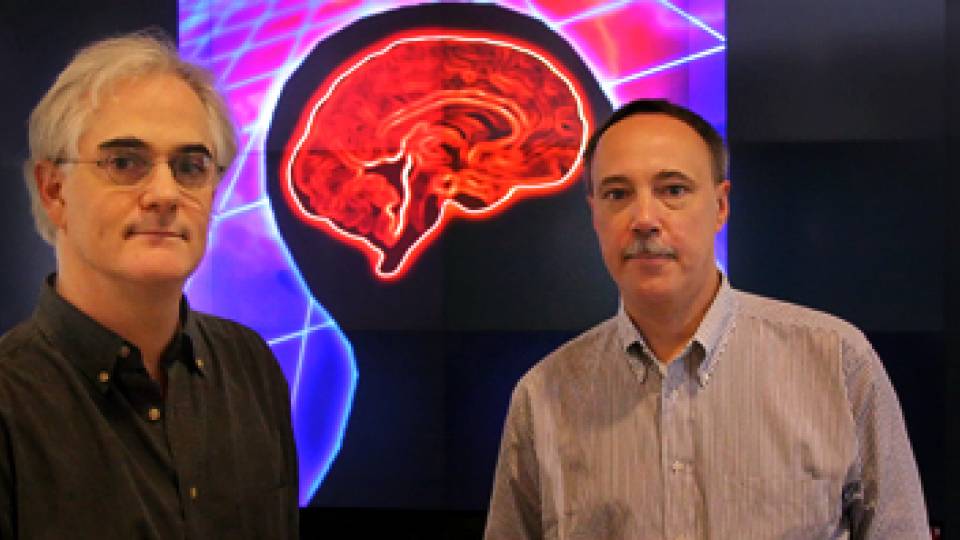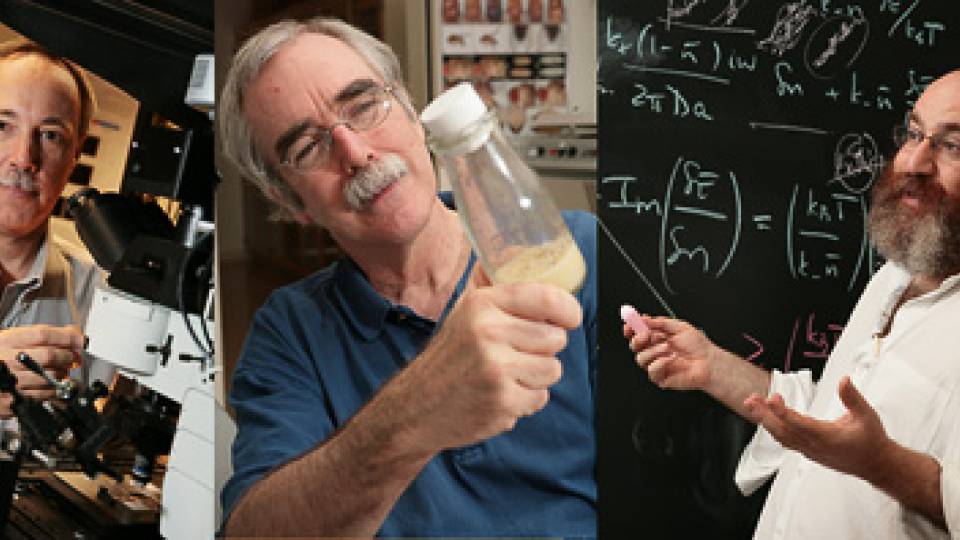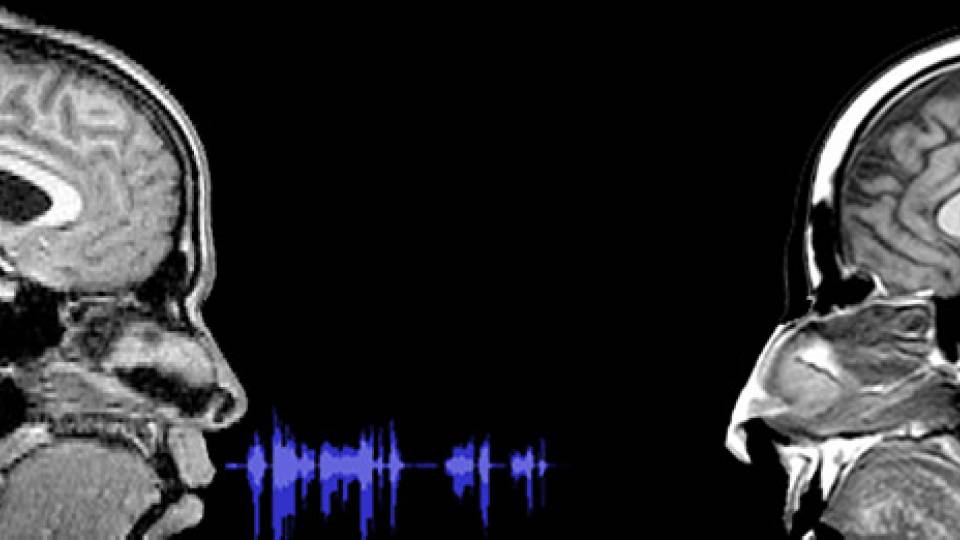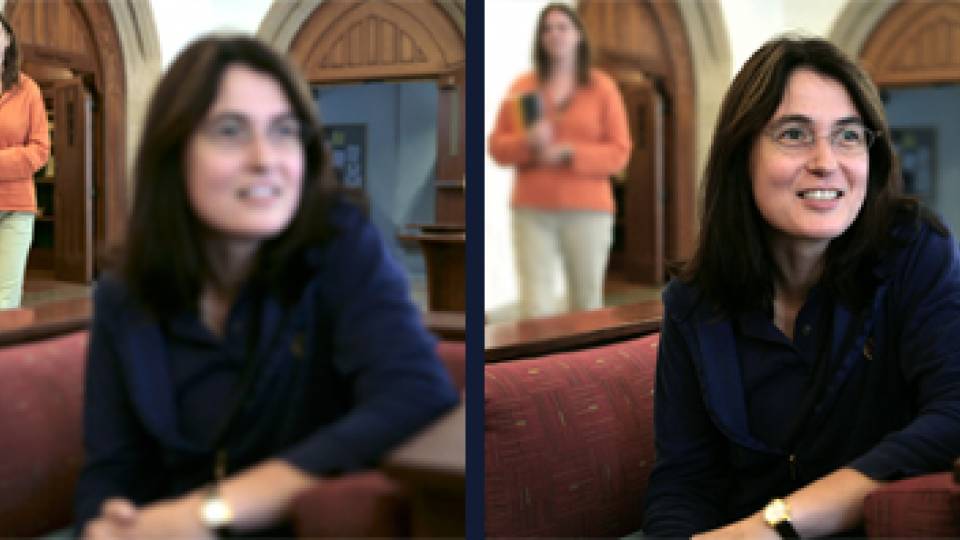From the Sept. 18, 2006, Princeton Weekly Bulletin
Studying the human brain has taught a team of Princeton researchers a thing or two about interdisciplinary science.
The team has been gathering in the basement of Green Hall for the past several years to confront an ongoing problem: how to take better “snapshots” of the brain’s activity as it functions. Success for the group can translate into better diagnoses for neural disorders as well as a more thorough understanding of the brain.
But as tools for exploring the mind improve, the new technology places demands on its users that go beyond what a single scientist — or even many scientists from a single field — can meet. The new technology demands individuals who can step outside the training they received from their own field in order to speak together, think together and act together. It demands a new kind of teamwork, the type that can bridge disciplines as diverse as physics, psychology and computer science. And it’s team-oriented people that Princeton’s Center for the Study of the Brain, Mind and Behavior attracts.
“To work on the leading edge of brain research, you have to master your own specialty, but you can’t stop there,” said center director Jonathan Cohen, who has been recruiting scientists for the team since he came to Princeton in 1998. “You have to be acquainted with other disciplines’ approaches to solving problems, so you can think more flexibly as a group. Just as different parts of the brain must come together to produce thought, no one person on the team can operate in isolation. You need each other to succeed.”
All this extra effort has begun to pay off for the center. Fifteen scientists from the center’s larger group banded together recently and earned high marks in a contest predicting how test subjects watching the TV show “Home Improvement” responded to the program’s humor. The contest, organized by the University of Pittsburgh, required entrants to interpret data from a functional magnetic resonance imager (fMRI), a complex device that can reveal brain activity as it happens on a very fine scale.
Though fMRI readouts are a blizzard of information, the group, led by Princeton psychologist Kenneth Norman, found a way to glean the relevant bits and generate coherent images from the raw data, which none of the competitors had ever seen before. The Princeton scientists’ predictions earned them second, fourth and sixth places out of 200 entries from 40 groups worldwide, netting the group a $5,000 prize.
According to Norman, the work of sifting through fMRI data to find the patterns was worth much more than money. It also has provided the scientists with a subtle reminder of why interdisciplinary work is worth the effort.
“Participating in contests like this one generates a lot of ideas for where to go next with our brain research,” said Norman, an assistant professor of psychology. “It also shows us that the difficulty of stepping outside your field can also be an inspiration and a marvelous opportunity for growth as a scientist and a thinker.”
Building the teamDespite the successes, Cohen admits that it can take some time to collaborate fully with other team members. To analyze the contest data, the team had to meld the talents of experts including Ingrid Daubechies, a professor of mathematics specializing in applied math; David Blei, an assistant professor of computer science specializing in machine learning; Denis Chigirev, a graduate student in physics; and Norman.
“You end up learning to speak another language, sometimes several,” said Cohen, the Eugene Higgins Professor of Psychology who is also co-director of the new Princeton Institute in Neuroscience. “You bring in remarkably capable people, like Ingrid Daubechies for example, and it still takes a year of work to get them up to speed on what we are doing and how we are approaching it so they can contribute in a meaningful way.”
Daubechies said getting to know the team before the brain imaging contest was time well spent, as it ultimately prepared her to assist the team with processing the signal from the fMRI recordings of the “Home Improvement” test audience. She helped filter out extraneous bits of information so the fMRI readings could be compressed into a manageable amount of data.
“Back in the days of black and white broadcast TV, my father would watch soccer matches despite the often terrible reception,” Daubechies said. “He could still recognize a soccer player despite the ‘snow’ because his brain knew how to filter out the noise. As I grew comfortable with the center’s projects, I realized that applied math might be useful for helping them teach computers to do the same sort of noise filtration.”
The fMRI data is noisy in part because human brains are noisy too. At any moment, our gray matter is occupied with many tasks in addition to regular conscious thoughts, and each task is often spread over many different sections of the brain. In an effort to keep track of all this decentralized activity, the fMRI divides the brain into tiny cubes called “voxels” that measure one to three millimeters on each side. The fMRI then measures the activity in each of these voxels, or volume pixels, named for their resemblance to the two-dimensional pixels that create images on a computer screen.
Piece by pieceFinding useful information in the voxels of brain activity is where Blei’s expertise came into play. It requires the computer to see more than just a few spots in that snowy TV screen image Daubechies described, said Blei.
“One fundamental truth about the brain is that no single area does all of the work on a problem,” Blei said. “You’re looking for patterns for what it means to share work. For example, I might teach e-mail software to recognize that a message that mentions ‘low interest rates’ is not spam if it’s from your Uncle Steve. Those two pieces of information combine to form a message you might find useful — and the same principle can be applied to distinguishing between what’s useful in combinations of voxels, and what’s merely noise.”
There is as much art as science to making such determinations, Blei said, and the interactions between different scientists require each to help the others filter the useful information. Fortunately, the team stays in touch, and the effort has paid off.
“Princeton has computer scientists and cognitive neuroscientists who can really communicate,” Norman said. “I think it really made the difference in the competition, as we were the only group in the top three that had a substantial neuroscience component. People on the team from all these disciplines meet weekly to talk about interdisciplinary issues, which helps us understand each other.”
Such understanding is part of the appeal for up-and-coming scientists like physics graduate student and team member Chigirev. He was attracted to studying the complex yet theoretically “messy” phenomena that crop up in economics and biology, many of which have historically been beyond the pale of traditional physics.
“Different sciences are not defined by what they study, but by the conceptual approach that they choose to use,” he said. “If you look at a textbook, physicists study matter and biologists study life, but if you look at how the science is actually done, you find all these boundaries crossed.”
For example, during the team’s recent collaborative work for the “Home Improvement” contest, Chigirev had to find a way to comprehend the brain’s biological activity that made sense to a physicist, which inspired him to take a different tack than Blei and Daubechies’ respective computer science and mathematical approaches. As he mulled over the lessons from his physics training, Chigirev recalled that when a piece of iron becomes magnetized, the metal’s individual molecules can be ignored in favor of imagining a “field” of molecules that averages all of their behavior.
“In a way, with the brain we have to do the same averaging,” Chigirev said. “Instead of trying to explain what individual neurons do, we can try to explain the average neural activity. Luckily, this is exactly what the MRI signal measures, and after I thought this way about the voxels in the MRI experiments I got even more excited.”
Thinking togetherLooking back on the “Home Improvement” project, Cohen said that the intuitive leaps the team members had to make in order to contribute actually got them behaving like parts of a single brain that worked together to achieve success.
“One of the most interesting things overall about this project is that the scientists did different jobs and made different kinds of contributions to the thinking and organization of the project at different times,” he said. “They did work outside their fields, finding their place in the group’s mind.”
A successful collaboration like this would seem to indicate that one of the standard criticisms of interdisciplinary science — that team members work in a more shallow fashion than they would on their own — does not hold true, Cohen said. But while the team does intend to continue refining its methods to make brain imaging more understandable by working across disciplinary boundaries, many team members admit that one of the great challenges continues to be learning each others’ approaches to science and communication.
“We’re not quite reading each other’s minds yet,” said Cohen, “but working and thinking together seems to be something we’re cut out for, both biologically and professionally.”



